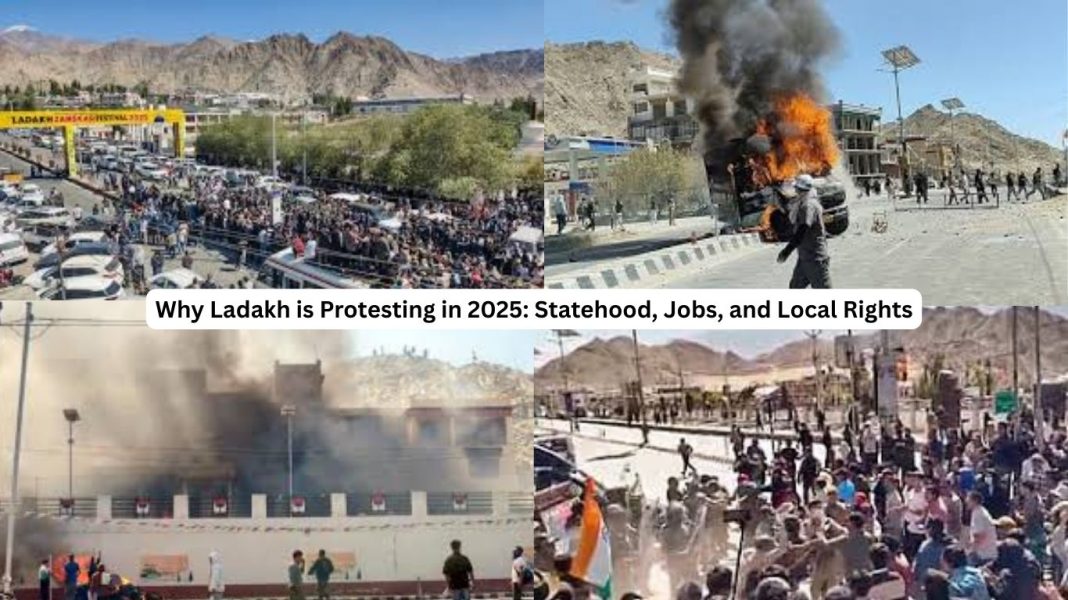Introduction: From Calm to Chaos
Ladakh—known for its snow-covered peaks, peaceful lakes, and serene landscapes—has suddenly become the center of nationwide attention. The Ladakh protests 2025 have transformed this quiet Himalayan region into a hub of activity. People who have long felt ignored are now demanding statehood, Sixth Schedule protections, job reservations, and political representation.
Why the Ladakh Protests Happened
The protests didn’t come out of nowhere—they are the result of long-standing local concerns:
- Demand for Statehood
Ladakh is a Union Territory, but locals feel that full statehood will give them more control over their own affairs, from jobs to education and local development. - Need for Sixth Schedule Protection
The Sixth Schedule gives special protections to tribal areas, including local governance and rights over land and resources. Residents believe this will help protect their culture, traditions, and environment. - Job Reservations for Locals
Many young people feel that government and local jobs are going to outsiders. They want reserved opportunities to ensure they can build a future at home. - Political Representation
Ladakhis want a stronger voice in Parliament and local councils so that their concerns are taken seriously. - Feeling Overlooked
Over the years, locals feel ignored by both the state and central government. The protests are their way of saying: “We’re here. Listen to us.”
Humanized Example:
Imagine living in a town where people far away make all the rules about your house, school, and job. Frustrating, right? That’s exactly how the people of Ladakh feel—they want to take charge of their own future.
How It Started: Hunger Strike and Peaceful Protest
The movement gained momentum with Sonam Wangchuk’s 15-day hunger strike. His demands were simple:
- Constitutional safeguards for Ladakh
- Job reservations for local youth
- Political representation
Even freezing cold weather couldn’t stop his determination. As they say, when there’s passion, not even -20°C can cool your spirit.
Escalation: From Peaceful to Violent
The protests started peacefully but soon escalated. Clashes broke out between protesters and authorities. Sadly, several people were injured and some lost their lives. The administration imposed curfews and internet restrictions. Streets became empty, and it seemed even the mountains were holding their breath.
Impact on Daily Life
- Many families lost loved ones.
- Schools, markets, and daily routines were disrupted.
- Curfews and transport restrictions brought life to a halt.
Even social media was partly restricted, so people relied on neighbors and friends for updates.
Demands: Not Just for Show
The protesters’ demands are clear:
- Statehood
- Inclusion in the Sixth Schedule
- Job reservations for local youth
- Proper parliamentary representation
Simply put, Ladakh isn’t asking for just a “seat at the table”—they want a whole new table where their voices are heard.
Government and Public Response
The government has promised talks and some measures, but people remain skeptical. Some support the peaceful protests, while others are frustrated with the disruption of daily life. One might joke that political promises in Ladakh move as slowly as its frozen rivers.
The Future: What’s Next?
The situation is still fragile. Talks might bring reforms, or protests could continue. One thing is clear: Ladakh protests 2025 have captured national attention, and people are determined to be heard. Only time will tell if the mountains echo freedom—or bureaucracy.
